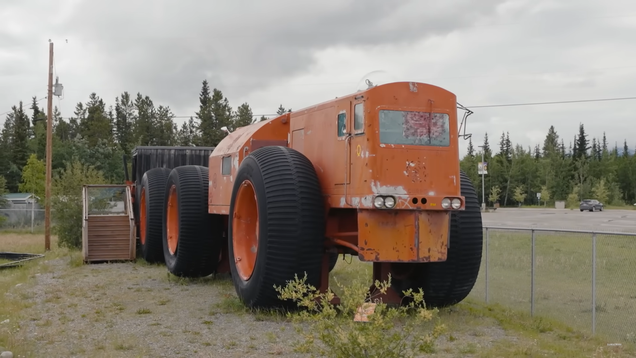The Evolution of Military Innovation: From Spy Planes to Snow Trains
The U.S. military has long been at the forefront of technological advancements, often pushing the boundaries of what is possible in defense and warfare. Over the decades, the military has invested heavily in a variety of projects, some of which have become iconic, while others remain obscure yet fascinating. Among these innovations is a peculiar concept: the snow train, designed to navigate and conquer snowy terrains. This article delves into the history of military innovations, the rationale behind them, and the intriguing story of the snow train.
Understanding the Military’s Investment in Technology
The U.S. military’s commitment to research and development is driven by the need to maintain a strategic advantage over potential adversaries. According to a report from the Congressional Research Service, the Department of Defense (DoD) allocated approximately $106 billion to research and development in 2022 alone. This investment spans various domains, including aerial reconnaissance, naval warfare, and ground operations.
Historically, military innovations have ranged from the groundbreaking to the bizarre. For instance, the development of super-secret spy planes like the U-2 and the SR-71 Blackbird revolutionized aerial surveillance during the Cold War. These aircraft not only provided critical intelligence but also showcased the lengths to which the military would go to secure national interests.
The Role of Unconventional Warfare Tactics
In addition to traditional military hardware, the U.S. military has explored unconventional tactics, such as training dolphins for underwater warfare. This initiative, while seemingly whimsical, underscores the military’s willingness to think outside the box in addressing unique challenges. The use of animals in warfare dates back centuries, but modern adaptations reflect a blend of technology and natural instincts.
The snow train, an ambitious project from the mid-20th century, fits into this narrative of unconventional military innovation. Designed to traverse harsh winter landscapes, the snow train was envisioned as a means to transport troops and supplies in conditions where traditional vehicles would struggle.
The Snow Train: A Unique Military Concept
The snow train was conceived during a period when the U.S. military was exploring various means to enhance mobility in extreme environments. The idea was to create a vehicle that could glide over snow and ice, ensuring that military operations could continue unabated even in the most challenging conditions.
While the specifics of the snow train’s design are not widely documented, it is believed to have drawn inspiration from existing rail technology, adapted for snowy terrains. The concept was part of a broader military strategy to ensure operational readiness in all climates, particularly during the Cold War when tensions with the Soviet Union were high.
Despite its innovative premise, the snow train never made it into active service. This raises an interesting question: why do some military innovations succeed while others fade into obscurity?
Factors Influencing Military Innovation Success
Several factors contribute to the success or failure of military innovations. First, the practicality of the technology plays a crucial role. Innovations that can be seamlessly integrated into existing military operations or that address immediate needs are more likely to receive funding and support.
Second, the geopolitical context is vital. During periods of heightened tension, there is often a greater urgency to develop new technologies, as seen with the rapid advancements during the Cold War. Conversely, in times of relative peace, funding for unconventional projects may dwindle.
Lastly, the adaptability of the technology to evolving warfare strategies is essential. As warfare has shifted towards asymmetric and hybrid models, the military must continuously reassess its technological needs.
Lessons from Military Innovations
The story of the snow train serves as a reminder of the military’s relentless pursuit of innovation, even in the face of failure. It highlights the importance of creativity and adaptability in military strategy. While not every project will lead to a successful deployment, the lessons learned from these endeavors often pave the way for future advancements.
In conclusion, the U.S. military’s history of innovation is rich and varied, encompassing a wide range of technologies and strategies. The snow train, while an unusual concept, exemplifies the military’s willingness to explore new frontiers in defense. As we look to the future, the balance between tradition and innovation will continue to shape the landscape of military technology, ensuring that the U.S. remains prepared for whatever challenges lie ahead.

